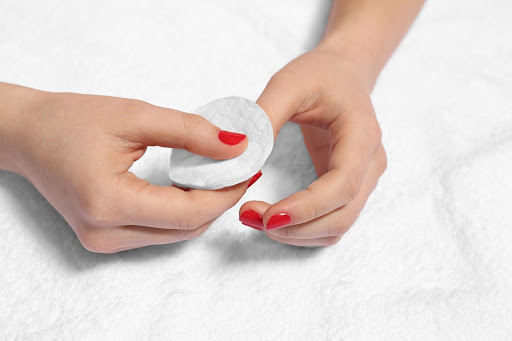
4 Differences between non acetone and acetone nail polish remover
With multiple nail trends storming their way into the industry, you might want to try all of them! And why not, a good nail colour makes your nail pop, and your overall look accentuated.
But for changing the nail paints that frequently, you need to have good quality nail polish-yes, but you also need a good quality nail polish remover. Because the nature of your nail paint remover decides the appearance and health of your nails- it can either make your nails yellow, dry and chapped or nourish them.
How to Choose a Good Nail Polish Remover?
So, with a lot of varieties of nail polish remover in the market, the difference lies in the type of solvent used- acetone vs non-acetone. We have curated a few aspects about them both, so you can choose the right remover. Read on to discover more:
1. Composition
Acetone is a chemical solvent- a derivative of isopropyl alcohol. Strong enough to even dissolve plastic, it has a harsh and pungent smell and is flammable. So, an acetone nail paint remover contains diluted acetone in a major ratio. These work by dissolving the nail enamel and removing it with a cotton pad, but in the process, they also tend to wipe off the inner layers, thus causing harm to the nails.
On the other hand, a non-acetone nail polish remover contains solvents such as ethyl acetate, butyl acetate and petroleum. Now, these solvents are definitely milder than acetone, and are better for your nails.
2. Effectiveness
Being strong and harsh, Acetone nail polish removers cause damage to nail extensions. Non-acetone nail polish remover on the other hand is gentler on the nails and removes the enamel without harming the nail bed.
3. Impact on the nails
Now, while acetone nail polish removers take less time to remove the nail enamel, they dehydrate the nails and cuticles. And with repeated and regular use, they cause whiteness of cuticles, and itching and redness in the skin surrounding the nails- which might further aggravate resulting in other harmful skin diseases. It also causes yellowing of the nails.
Non-acetone nail polish removers, on the other hand, have a milder formula and wipes off nail polish without causing much harm to the nails and the surrounding skin.
4. Suitability
Now, if you have got that beautiful glitter nail enamel or a shellac manicure, acetone and non-acetone nail paint removers are both perfect to remove these. Moreover, non-acetone nail polish remover works well for removing darker as well as lighter shades, without causing any harm to the nails. So, whether you’ve applied black nail polish, a nude enamel or a coral nail colour, we suggest non-acetone nail polish remover.
The advantage with non-acetone nail polish remover is also, that it will give you clear nails (zero yellowing) so that you are ready for your next look; and they are also 100% suitable for all skin types including sensitive skin.
So, what exactly is a perfect nail enamel remover? While both acetone and non-acetone nail paint removers have their pros and cons, a perfect nail enamel remover is the one that is free from acetone as well as alcohol.
Is There a Safer and a Better Alternative?
If you want to switch to a safer and better alternative, try using Lafz Nail Polish Remover– It is both- alcohol-free and acetone-free.
The super quick and gentle formula makes it ideal for frequent use. And since it comes in a compact bottle it is 100% travel-friendly. So, when you are on a vacation and want to change that nail colour every day to match your outfits, you easily can!
Along with all these benefits, the greatest advantage of all is that it is enriched with castor oil which keeps your nails and cuticles moisturized and does not dry out your nails. And of course, you don’t need to worry about stocking cotton balls- you just need to dip your nails in the bottle, twist a couple of times and be done! No trace of nail polish on the nails.


